
Davao del Norte, officially the Province of Davao del Norte, is a province in the Philippines located in the Davao Region in Mindanao. Its capital and largest city is Tagum. The province also includes Samal Island to the south in Davao Gulf.

San Isidro, officially the Municipality of San Isidro, is a 3rd class municipality in the province of Davao Oriental, Philippines. According to the 2020 census, it has a population of 33,664 people.

Samal, officially the Island Garden City of Samal is a 4th class component city in the province of Davao del Norte, Philippines. According to the 2020 census, it has a population of 116,771 people.

Asuncion, officially the Municipality of Asuncion, is a 1st class municipality in the province of Davao del Norte, Philippines. According to the 2020 census, it has a population of 61,893 people.

Braulio E. Dujali, officially the Municipality of Braulio E. Dujali, or simply referred to as Dujali, is a 4th class municipality in the province of Davao del Norte, Philippines. According to the 2020 census, it has a population of 35,729 people.

Carmen, officially the Municipality of Carmen, is a 1st class municipality in the province of Davao del Norte, Philippines. According to the 2020 census, it has a population of 82,018 people.

Kapalong, officially the Municipality of Kapalong, is a 1st class municipality in the province of Davao del Norte, Philippines. According to the 2020 census, it has a population of 81,068 people.
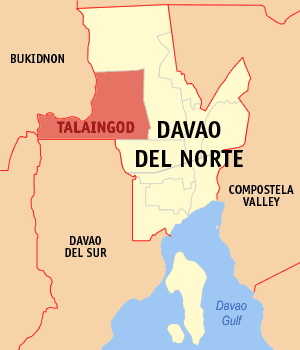
Talaingod, officially the Municipality of Talaingod, is a 2nd class municipality in the province of Davao del Norte, Philippines. According to the 2020 census, it has a population of 28,333 people.
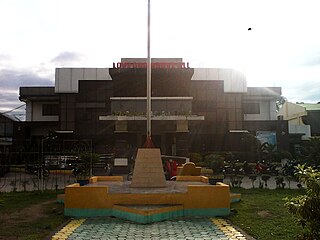
Santo Tomas, officially the Municipality of Santo Tomas, is a 1st class municipality in the province of Davao del Norte, Philippines. According to the 2020 census, it has a population of 128,667 people.

New Corella, officially the Municipality of New Corella, is a 2nd class municipality in the province of Davao del Norte, Philippines. According to the 2020 census, it has a population of 57,913 people.

Laak, officially the Municipality of Laak, is a 1st class municipality in the province of Davao de Oro, Philippines. According to the 2020 census, it has a population of 79,744 people.

Mabini, officially the Municipality of Mabini, is a 2nd class municipality in the province of Davao de Oro, Philippines. According to the 2020 census, it had a population of 43,552.

Maragusan, officially the Municipality of Maragusan, is a 1st class municipality in the province of Davao de Oro, Philippines. According to the 2020 census, it has a population of 64,412 people.
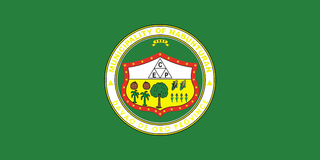
Nabunturan, officially the Municipality of Nabunturan, is a 1st class municipality and capital of the province of Davao de Oro, Philippines. According to the 2020 census, it has a population of 84,340 people.

Montevista, officially the Municipality of Montevista, is a 3rd class municipality in the province of Davao de Oro, Philippines. According to the 2020 census, it has a population of 46,558 people.

Kiblawan, officially the Municipality of Kiblawan, is a 2nd class municipality in the province of Davao del Sur, Philippines. According to the 2020 census, it has a population of 49,381 people.
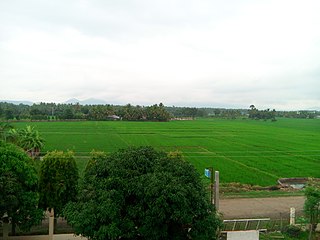
Magsaysay, officially the Municipality of Magsaysay, is a 3rd class municipality in the province of Davao del Sur, Philippines. According to the 2020 census, it has a population of 56,263 people.
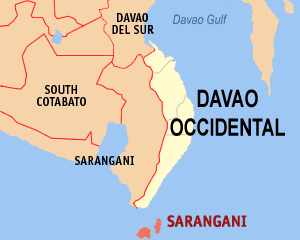
Sarangani, officially the Municipality of Sarangani, is a 4th class municipality in the province of Davao Occidental, Philippines. According to the 2020 census, it has a population of 22,515 people.

Baganga, officially the Municipality of Baganga, is a 1st class municipality in the province of Davao Oriental, Philippines. According to the 2020 census, it has a population of 58,714 people, making it the third largest town in province.

Governor Generoso, officially the Municipality of Governor Generoso, is a 2nd class municipality in the province of Davao Oriental, Philippines. According to the 2020 census, it has a population of 59,891 people.























